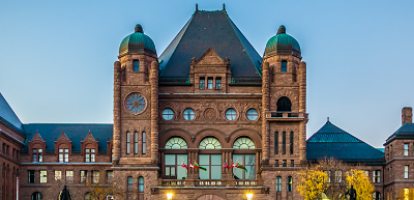From: William Robson
To: Provincial Finance Ministers and Taxpayers
Date: December 13, 2017
Re: Healthcare Costs in Canada: Stopping Bad News Getting Worse
The long-term sustainability of publicly funded healthcare is a matter of debate. Many people worry about slower economic growth and other claims on governments crimping healthcare spending, while aging, new treatments, powerful provider groups and chronically slow productivity growth push costs up. Others take a more sanguine view of governments’ ability to contain costs while funding acceptable levels of care.
In this context, the annual National Health Expenditure (NHEX) reports from the Canadian Institute of Health Information (CIHI) earlier this decade sounded reassuring, as preliminary estimates of spending showed declining rates of growth. Not so this year. The top-line takeaway in the 2017 NHEX report is bad news: preliminary figures shows the biggest spending increase since 2010.
Bad – but not, on its face, disastrous. The preliminary figure for spending growth in 2017 is 3.3 percent. Many forecasts show Canadian gross domestic product – in current dollars: real incomes plus inflation – rising about that fast, on average, over the medium term. Push a layer deeper though, and things get worse. The NHEX draws its current-year numbers from government budgets and other plans. Each report also contains revised figures for previous years, based on actual spending. The revised figures in the latest report show that over the previous three years (2014-2016), spending growth across the country averaged 1.5 percentage points above the preliminary figures. This pattern – final numbers exceeding the preliminary ones – is a longstanding feature of the NHEX reports (see figure). Add a 1.5-percent overshoot to the 3.3 percent preliminary figure for 2017 – which would turn an anticipated increase of $5.1 billion into an actual increase of $7.4 billion – and concerns about the sustainability of our current model of publicly funded health care in Canada become more acute.
Over the period from the NHEX's inauguration in 1998 until 2011, it told a disturbing tale. Spending rose at a 7.0 percent annual rate – much faster than any estimate of Canada's long-term potential economic growth. That meant publicly funded healthcare was on a course to absorb an ever-increasing share of our GDP, and financing it would require ever-rising tax rates. While the preliminary NHEX numbers in the past few years suggested a break in the trend, the revised ones – the ones based on actual spending – tell a less reassuring story.
Preliminary versus Latest Changes in Provincial/Territorial Healthcare Spending
The key challenge for provinces is to make their budget targets – the intentions that underlie the NHEX’s preliminary figures – stick. That requires both health policy reforms that will align the behaviour of providers and patients better with fiscal reality, and better overall budgetary discipline. Keeping costs in line with our ability to pay is not just a matter of budgeting sustainable increases, it is also – and critically – a matter of achieving them.
William B.P. Robson is President and CEO of the C.D. Howe Institute.
To send a comment or leave feedback, click here.






